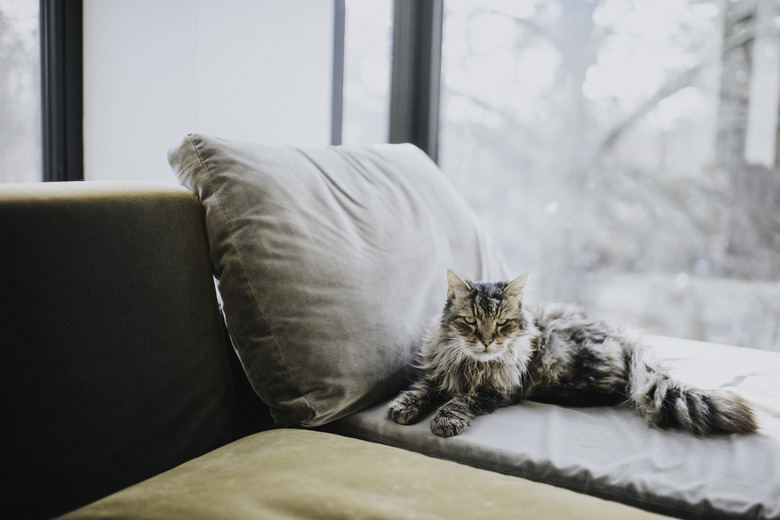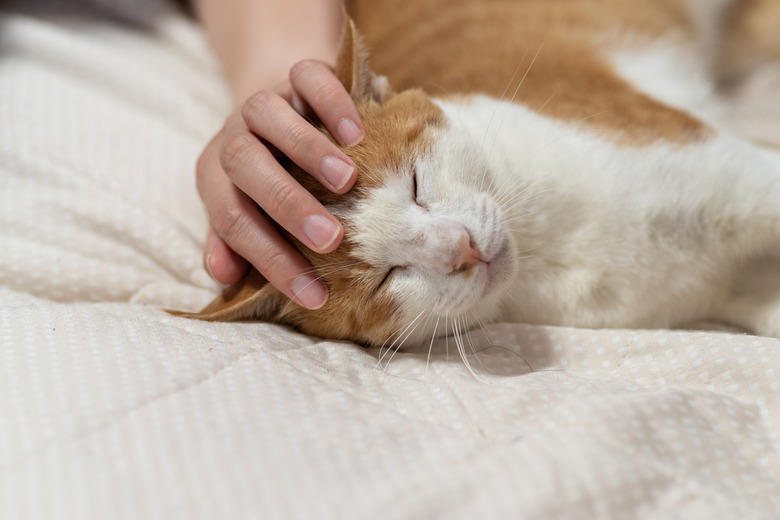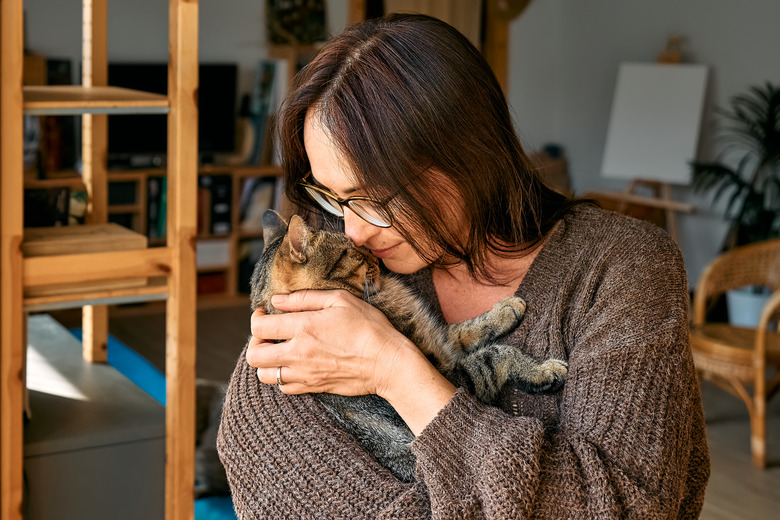Kidney Disease In Cats: Know How To Care For And When To Euthanize A Cat With Renal Failure
We would all love to be able to spend countless years with our cats, but sometimes, serious health issues mean we may need to say goodbye sooner than we'd hoped. Understanding kidney disease in cats and when to euthanize can be particularly challenging because of the fluctuating symptoms and the gradual progression of the disease. If your cat has been diagnosed with renal failure, understanding how the disease works and what signs you may see during the end stages can help you to understand if and when you may need to say goodbye to your cat.
Understanding renal failure in cats
Understanding renal failure in cats
A cat's kidneys perform many essential functions. They help to remove waste from your cat's blood and are responsible for producing urine. The kidneys also help to balance the levels of minerals, including potassium and sodium.
When the kidneys cannot efficiently remove toxic waste from a cat's body, the cat is experiencing chronic kidney disease (CKD). To be diagnosed with CKD, at least 2/3 of your cat's kidneys are compromised before the symptoms start. During this time, your cat's kidneys will struggle to remove toxins from their blood. Once the symptoms of kidney problems start, they will continue to progress until your cat experiences renal failure.
The signs of kidney insufficiency include loss of appetite, weight loss, and poor coat quality. You may also notice your cat drinking large quantities of water and urinating excessively. Many pet owners miss these more minor symptoms, only recognizing that their cat has a health issue when the symptoms become more serious as kidney failure progresses.
Stages of kidney failure in cats
Stages of kidney failure in cats
There are four stages of kidney failure in cats. The early stages of CKD are often overlooked, as the signs are not obvious to the average cat owner. The symptoms of kidney failure in these early stages include weight loss, poor coat quality, bad breath, and changes in appetite.
When your cat reaches this stage of CKD, their kidneys are having trouble removing substances, including waste and minerals, from the blood. The kidneys are also having trouble releasing useful substances into the blood. All of this results in a buildup of waste products in a cat's body. Simultaneously, cats lose water that their body could have used. Cats in renal failure often develop high blood pressure and may need medication to lower their blood pressure.
Signs of late-stage CKD include:
- Dull, sunken
eyes - Lack of
coordination or inability to walk - Unexplained
change in body odor - Refusing to
drink water - Incontinence
- Pacing and
restlessness - Hiding,
withdrawing, and running away - Confusion
- Seizures
Once symptoms of late-stage CKD appear, the cat has entered the terminal stage of kidney disease. The risk that they are suffering is very high at this stage, and it's important to schedule a conversation with your veterinarian about saying goodbye to your cat as soon as possible."
Managing your cat’s damaged kidneys
Managing your cat's damaged kidneys
If the kidneys are suddenly damaged, such as by a cat ingesting antifreeze, the cat goes into acute kidney failure, which occurs rapidly across days or weeks. Chronic kidney disease is a longer-lasting condition that cats can live with for months or even years. Chronic renal failure is incurable and can affect one or both kidneys. Once a cat's kidneys are damaged, either from a sudden event, like poisoning, or from a longer-term deterioration, the kidneys can rarely recover.
However, renal failure can be managed with special diets, antibiotics if infections are present, supplementation with potassium, and drugs to lower high blood pressure. Your veterinarian may also administer fluids to address dehydration and flush toxins out of your cat's body. You can work with your veterinarian to carefully manage your cat, and in most cases, renal failure progresses slowly. As part of this, your veterinarian may show you how to give subcutaneous fluids (under the skin) on either a daily or weekly basis, which helps to keep your cat hydrated. Some cats can live for several years when their renal disease is well-managed.
Respecting your cat’s wishes
Respecting your cat's wishes
While there may be various ways to prolong your cat's life, they may not want to participate in these methods. For instance, some pets may not be bothered by regularly getting subcutaneous fluids. However, your cat may not feel the same way, making fluid sessions events that your cat dreads and fights. Older cats may be more sensitive to treatment options.
It's important to respect your cat's wishes when it comes to procedures that are regular and repeated. Fluids might keep your cat alive longer, but if they dread every fluid session, you might need to have a hard conversation with yourself about whether it is worth it to continue to put them through these upsetting and distressing experiences. It can be difficult at times for cat owners to distinguish between what your cat actually wants and needs and your own desires.
Cats can be very particular, and since you know your cat's personality, you will likely be able to tell if treatments are making your cat miserable and harming them more than they're helping. If you're not sure, contact your veterinarian to discuss the best options.
Assessing your cat’s quality of life
Assessing your cat's quality of life
The very last stages of renal failure are painful and unpleasant. To prevent prolonged suffering, it is important that you, as a cat owner and lover, recognize when it's time to say goodbye to your cat. Have a conversation with your veterinarian about how to recognize the signs that a cat is dying of kidney failure. This will help you to understand what to expect as your cat enters the last stage of renal failure.
As your cat's renal failure progresses, you will need to regularly assess their quality of life. Two of the main qualities you should consider are whether your cat is still seeking out and responding positively to attention as well as whether they are still eating and drinking on their own. Additionally, consider whether your cat is able to still use the litter box on their own, whether they have started to shrink away from you when you go to pet them, and whether they have undergone any significant behavior changes.
Chances are that you know your cat so well that you'll quickly recognize when their health begins to deteriorate. When considering kidney disease in cats and when to euthanize, you should involve your veterinarian in your decision, but ultimately, you are the one who needs to make that final decision.
Make saying goodbye to your cat easier
Make saying goodbye to your cat easier
When you're facing the decision to euthanize your cat, knowing what's involved can help. Talk with your veterinarian ahead of time about what the process will be like. Think about your aftercare options now.
Will you bring your cat home to bury their body? Would you like to have your cat cremated? By looking into costs and options ahead of time, you can have a plan in place that can make the end of your cat's life a little bit easier to face. This will also make some of the hard choices you will have to make a little easier because you have already thought about them.
You may also want to come up with a list of the requirements that you'll use when assessing your cat's quality of life and identify situations where it will be time to say goodbye. One effective way to do this is to keep a journal of how your cat is doing and what activities they are engaging in daily. If you recognize that your cat is having more bad days than good days, that is a sign that it may be time to say goodbye. If you're unsure about whether it's time, a veterinarian may be able to provide quality-of-life questionnaires and other resources that you can refer to on a regular basis during this stage of your cat's life.
The symptoms of renal failure can fluctuate, and bloodwork can give you some insight on what's going on in your cat's body. Ultimately, you will need to weigh the physical symptoms with what your cat's behavior is telling you. While saying goodbye to a cat is heartbreaking, if your cat is in pain and has a poor quality of life, euthanizing them is the kindest way to end their suffering.
The bottom line
The bottom line
Your cat's kidneys perform essential functions, including the removal of waste from their blood. When their kidney function starts to decline, you may be able to establish a treatment plan and manage their condition with the help of your veterinarian. This can allow them to live several more years with a good quality of life. However, as your cat's chronic kidney failure progresses, the time will come when you need to consider euthanasia to prevent unnecessary suffering.



